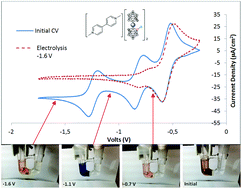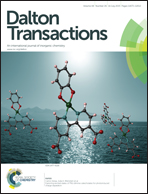How to get the desired reduction voltage in a single framework! Metallacarborane as an optimal probe for sequential voltage tuning†
Abstract
An appealingly wide set of redox couples ranging from −1.74 to −0.35 V based on a metallabisdicarbollide derivative, [M(C2B9H11−yIy)2]− (M = Co, Fe), each being distinguished from the former by near 0.15 V and all having the same structure have been demonstrated. The redox active methyl viologen moiety ([MV]2+) has been used as a benchmark.


 Please wait while we load your content...
Please wait while we load your content...